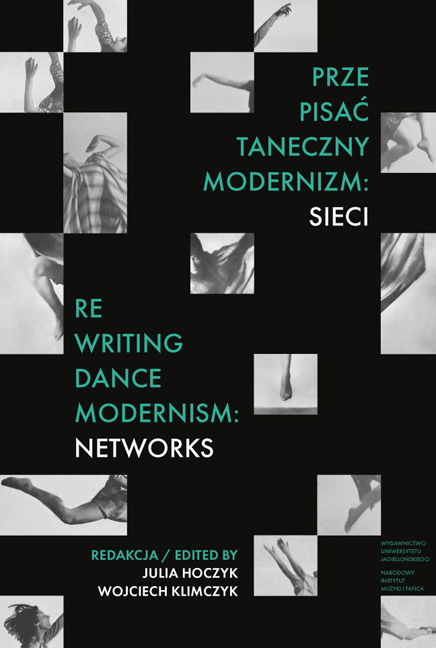Book contents
- Frontmatter
- Contents
- Prze-pisać taneczny modernizm: sieci
- Metodologie: usieciowianie tanecznego modernizmu
- Transmisje: transnarodowe trajektorie tanecznego modernizmu
- Poszerzenia: taneczny modernizm w słowiańskiej Europie Środkowej
- Methodologies: Networking Dance Modernism
- Transmissions: Transnational Trajectories of Dance Modernism
- Expansions: Dance Modernism in Slavic Central Europe
- Biogramy autorów
- Authors’ Biographies
- Indeks / Index
- Miscellaneous Endmatter
- Miscellaneous Endmatter
Palimpsests: Dance Modernism
Published online by Cambridge University Press: 01 March 2024
- Frontmatter
- Contents
- Prze-pisać taneczny modernizm: sieci
- Metodologie: usieciowianie tanecznego modernizmu
- Transmisje: transnarodowe trajektorie tanecznego modernizmu
- Poszerzenia: taneczny modernizm w słowiańskiej Europie Środkowej
- Methodologies: Networking Dance Modernism
- Transmissions: Transnational Trajectories of Dance Modernism
- Expansions: Dance Modernism in Slavic Central Europe
- Biogramy autorów
- Authors’ Biographies
- Indeks / Index
- Miscellaneous Endmatter
- Miscellaneous Endmatter
Summary
She must have touched hundreds of floors, sensing them underneath her (bare) feet, tracking them on her skin, experiencing new textures, probing them: they may have given her a sense of stability, or that of resistance. She stood on them, walked on them, ran on them, fell down and got back up again. She must have danced with them, too. Did she, though?
He must have touched hundreds of others. But also himself. Not only during dance classes, rehearsals, and performances, but also beyond them. In his daily life? Only if the classes, rehearsals, and performances were not part of the daily routine – and yet they were. Still, touch during rehearsals differs from that during performances. What were those types of touch like to him? Did he classify them, and if so, how? Is it possible to speak of specifically dance-related types of touch? Ones that must be learned, trained, and offered to the gaze, which does touch one, too, albeit in different ways (what is the [arbitrary?] difference between them?). He must have practiced some politics of touch. Did he, though?
They must have considered what they were doing. They must have had some notions of their own practice. They must have justified their dance (given that they might have pursued other paths through life), i.e., stand for something, and against something else. This is what choreography appears to be about: making a discursive sense of motion. But were they, indeed, after motion? They had to think about it, they can't have been sure of what they were doing. They can't have performed modernism. Modernism came later, or was rather prescribed for us and administered to them much like a treatment to the uncertain experience of dance movement, the elusiveness of movability (let me call it “dancing”), which we discerned in them (or which we [have] imputed to them?). Modernism had to be written in order to make sense of what they did. It had to be written by others, just like they had to write (about) “their” movement. Did they, though?
The above questions are all theoretical, i.e,. they follow on from an attempt to systematize practice, subject it to contemplative observation, one that is by no means passive or (contrary to the more radical constructivists) self-referential.
- Type
- Chapter
- Information
- Re-writing Dance Modernism: Networks , pp. 321 - 348Publisher: Jagiellonian University PressPrint publication year: 2023



